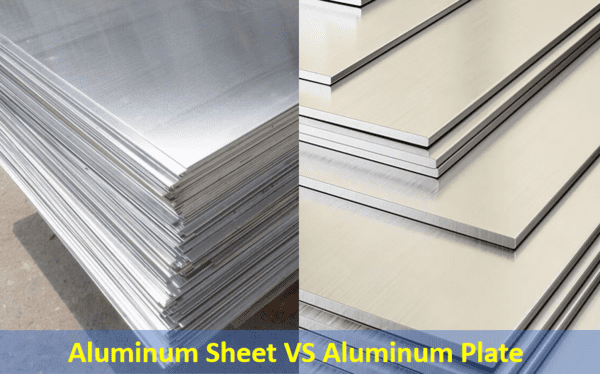Aluminum Sheet VS Aluminum Plate
Aluminum sheet and aluminum plate are both common aluminum metal profiles. They are similar in many aspects, but there are also some key differences. In general, aluminum plates and aluminum sheets have similarities in material type, corrosion resistance, etc., but there are obvious differences in thickness, application, mechanical properties, and regional differences. These differences determine their suitability for specific application scenarios.
 aluminum sheet vs aluminum plate
aluminum sheet vs aluminum plateSimilarities Between Aluminum Sheet and Aluminum Plate:
1. Metal material type: They are all made of aluminum or aluminum alloy and belong to the same metal material.
2. Aluminum series: Both can be made of 1000-8000 series aluminum alloy.
3. Density: Whether it is aluminum plate or aluminum sheet, their density is the same, 2.7g/cm³.
4. Corrosion resistance: Since they are all made of aluminum or aluminum alloy, they have good corrosion resistance and are suitable for use in a variety of environments.
5. Melting point: The melting point of aluminum plate is around 660℃
6. Boiling point: The boiling point of aluminum plate is 2327℃
The Difference Between Aluminum Sheet And Aluminum Plate:
1. Different thicknesses: The most obvious difference between Aluminum sheet and aluminum plate is the difference in thickness, which is the main difference between aluminum plate and aluminum sheet. The thickness of Aluminum sheet is usually 0.2mm-6mm (0.008 inches-0.25 inches)2mm 3mm 4mm 5mm, while the aluminum plate is thicker, generally starting from 0.25 inches (6.35 mm). The specific thickness division of aluminum plate alloys is not absolute and may change due to different industry standards and practical applications.
2. Different application fields: Due to its thin characteristics, aluminum sheets are usually used to manufacture packaging, body panels, cookers, roofs, gutters, carports, etc. In contrast, aluminum plates are commonly used in heavy-duty structural applications such as aerospace, transportation, and military industries due to their higher strength and durability.
3. Mechanical properties and formability: Due to different thicknesses, aluminum sheet and aluminum plate may have different mechanical properties, formability and surface treatment methods. Aluminum sheets are easier to form and process into a variety of shapes and sizes, while aluminum plates are often used in structural applications that require strength and durability.
4. Regional differences: Different countries and regions may have different habits in naming aluminum plates and aluminum sheets. For example, in the United States and Canada, aluminum plate generally refers to aluminum that is thicker than 0.250 inches (6.35mm), while aluminum sheet refers to aluminum that is less than 0.250 inches (6.35mm) thick. In Australia and New Zealand, the word “sheet” is generally used to describe aluminum products of any thickness, while “plate” is used to describe thicker, heavier products.
Aluminum Plate and Aluminum Sheet are both commonly used aluminum products, but there are certain differences in thickness, use and characteristics of the sheets. Which material to use depends on the specific application requirements and scenarios. Huawei Aluminum Sheet Factory can provide various types of aluminum sheets according to customer needs.
